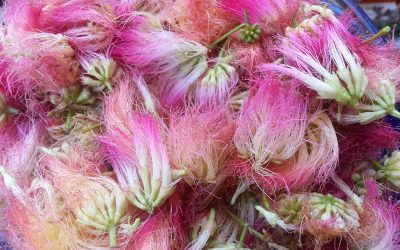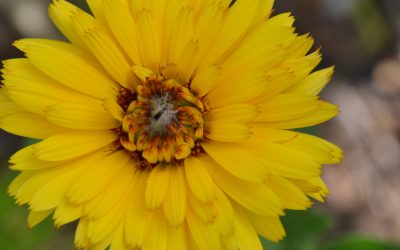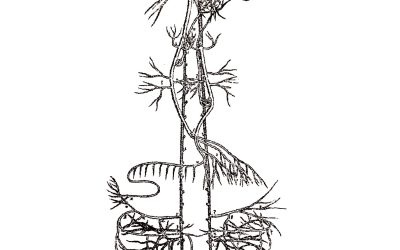Herbal Bathing: Maurice Messegue, Master of the Art

Maurice Messegue, French Herbalist (photo credit)
“To know a river you have to know its source.” For Maurice Messegue that source was his father. In his autobiography: Of People & Plants, Maurice describes his father as a cherished wellspring in a land where water was scarce and dowsing for water was commonplace. Maurice describes his father as a wellspring that guided and shaped his life like a river. “He alone shaped the entire course of my life.” He had a deep love and reverence for his father who showed him the beauty of the local plants, animals and nature (Messegue, p.1). This love of the land was in the region of the Gers in southwestern France. Still considered amongst the most rural and least populated areas in Europe.
Maurice Messegue was born on December 14, 1921. And, lived with his family in his grandparents house in Gavarett. His love of his father was also steeped in a long connection to the land. His family havin lived on this land for over 450 years with the special knowledge of plants running like a river throughout time. He believed he had some Moorish ancestry which he partly attributed to his connection to plants, animals, and the land (Messegue, p. 2, 4). Maurice grew up to be a world famous herbalist who learned the techniques of healing common ailments with herbal hand and foot baths. He was known for his successes in treating people who had poor luck with doctors. He learned his way with herbs and herbal baths primarily from his father Camille.
Messegue wrote a number of herbal books including the entertaining and useful autobiography I am describing from here: Of People and Plants. It is anecdotal but also has very useful information on how to use plants, his methods and processes. It contains useful appendices of herbal recipes for ailments. Hand and foot bath treatments are almost universally prescribed. He also provides research on nutrition and lifestyle recommendations throughout the seasons. This autobiographical herbal describes his journey with plants from boyhood throughout his life. And especially the huge loving influence and guidance from his father as a humble peasant, community healer and nature enthusiast.
The opinions about Maurice Messegue throughout his life ran a huge gamut. Messegue was thought to be a beloved local healer, a peasant, a charlatan, and a miracle worker. He was also a person to be shunned, scorned, denounced, opposed, sought out, praised or acclaimed. He was brought into court yearly on charges of illegally practicing medicine. He worked with common people whether or not he could get paid. He also treated many famous personalities such as Winston Churchill, Jean Cocteau, President Herriot of France, Mistinguette, King Farouk, the future Pope John XXIII, and others.
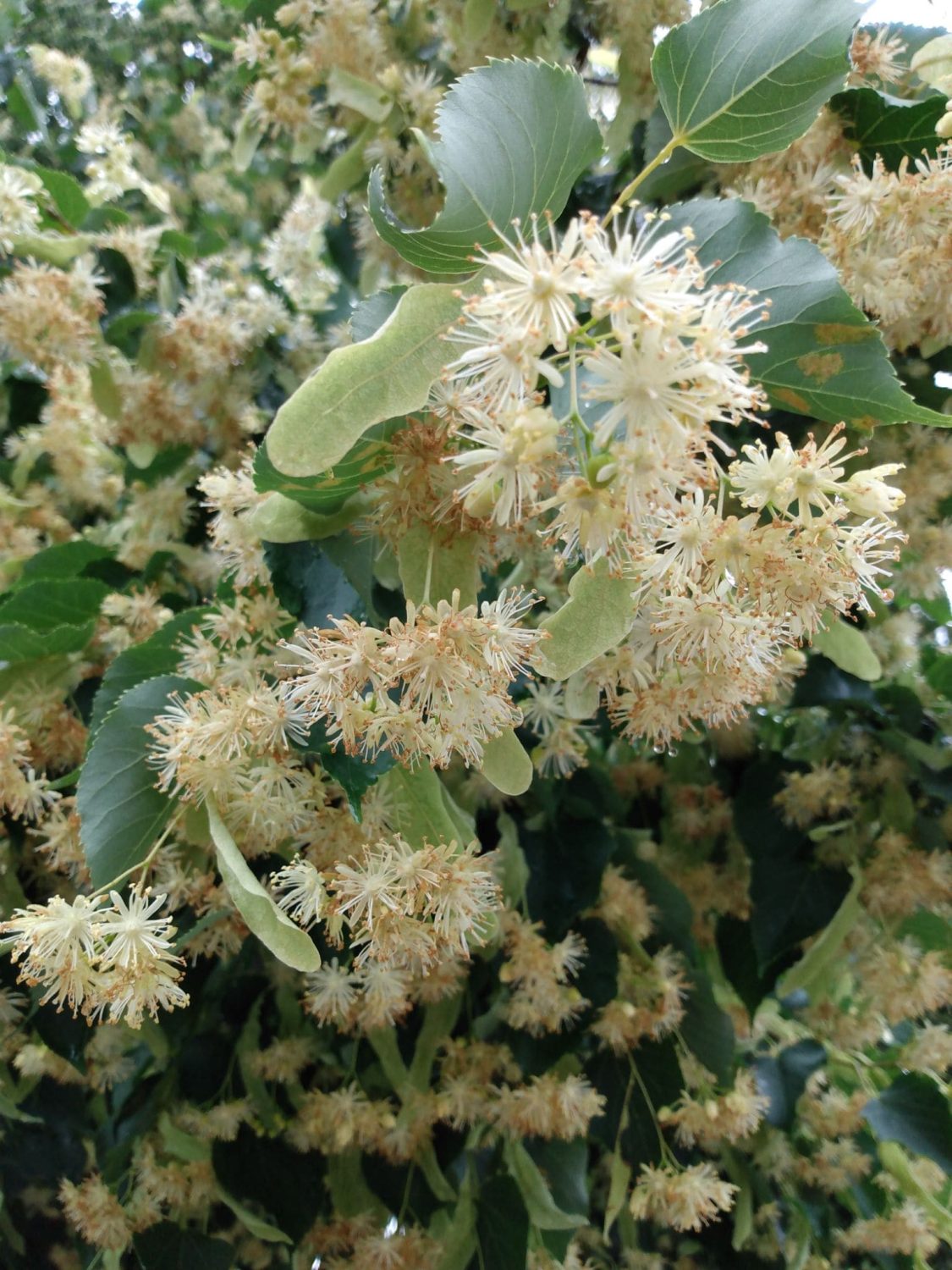
Linden Blossoms
On Water and Herbs for Bathing
“Linden blossom was picked all warm in the sun and buzzing with bees, and spread out on canvas sheets in the shade. ‘The secret,’ my father would say, ‘is not to let the plants die and turn to dust: you have to get all the good out of them while they still have it” (Messegue, p. 2). Then when the linden blossoms are barely dry they are soaked in huge copper basins filled with water. The flowers were strained off and the infusion was stored for herbal baths.
Have you ever smelled fresh Linden flowers? They were planted along an avenue toward the ocean where I visited a few years ago. The sweet smell was intoxicating and taught me so much about the beauty of Linden. It literally draws you to it and begs your return.
One of the profound things about Messegue’s story is the influence his father had on his upbringing and his learning about nature. He learned to dowse for water using a thin branch of a hazel tree as a wand. He describes the dryness of the area in other sections of the book. Dowsing was hugely important because of the ever-demanding need for water and wells. His father was a hunter, water diviner and could cure people. This wasn’t seen as unusual. Everyone in his family knew how to heal people. “…we didn’t think anything of it. All our family had done the same: my grandfathers and grandmothers and even my mother” (Messegue, p. 7).
Messegue describes a deeper experience of reading water in the land that he learned from his father. “But there are also outward and visible signs of the presence of water: the geological configuration of the land, the plants: horsetail, certain kinds of nettle, certain kinds of buttercups. There’s nothing supernatural about all that, and in fact my father used to call them the ‘water divining plants” (Messegue, p. 8).
His father did not like scientific names for plants but preferred the common names and the common stories for plants. Such as the “swallow’s flower.” The father called the greater celandine plant the swallow’s flower. Centuries old lore would have it that the greater Celandine plant “has been called the plant that makes a sick man weep if he’s going to die or sing if he’s going to get better.” Also yarrow (milfoil) was called carpenter’s plant because it mends cuts (Messegue, p. 8). Maurice learned dozens of common plants such as his father’s favorites that he used the most often: greater celandine, single seed hawthorn, buttercup, artichoke leaves, watercress, corn poppy, creeping couch grass, lavender, nettles, peppermint, common broom, dandelion, parsley, sage, crimson clover, broad leaved plantain, cabbage rose, sweet violet, blackberry bramble. Other plants his father used were: yarrow, garlic, shepherd’s purse, spring heath, cabbage, round leaved mallow, onion, male fern, corn, and meadow sweet. Also used were: knapweed, borage, Greater burdock, sweet brier, mistletoe (Viscum album) field horsetail, bloody burnet and juniper berries (Messegue, p. 8, 9).
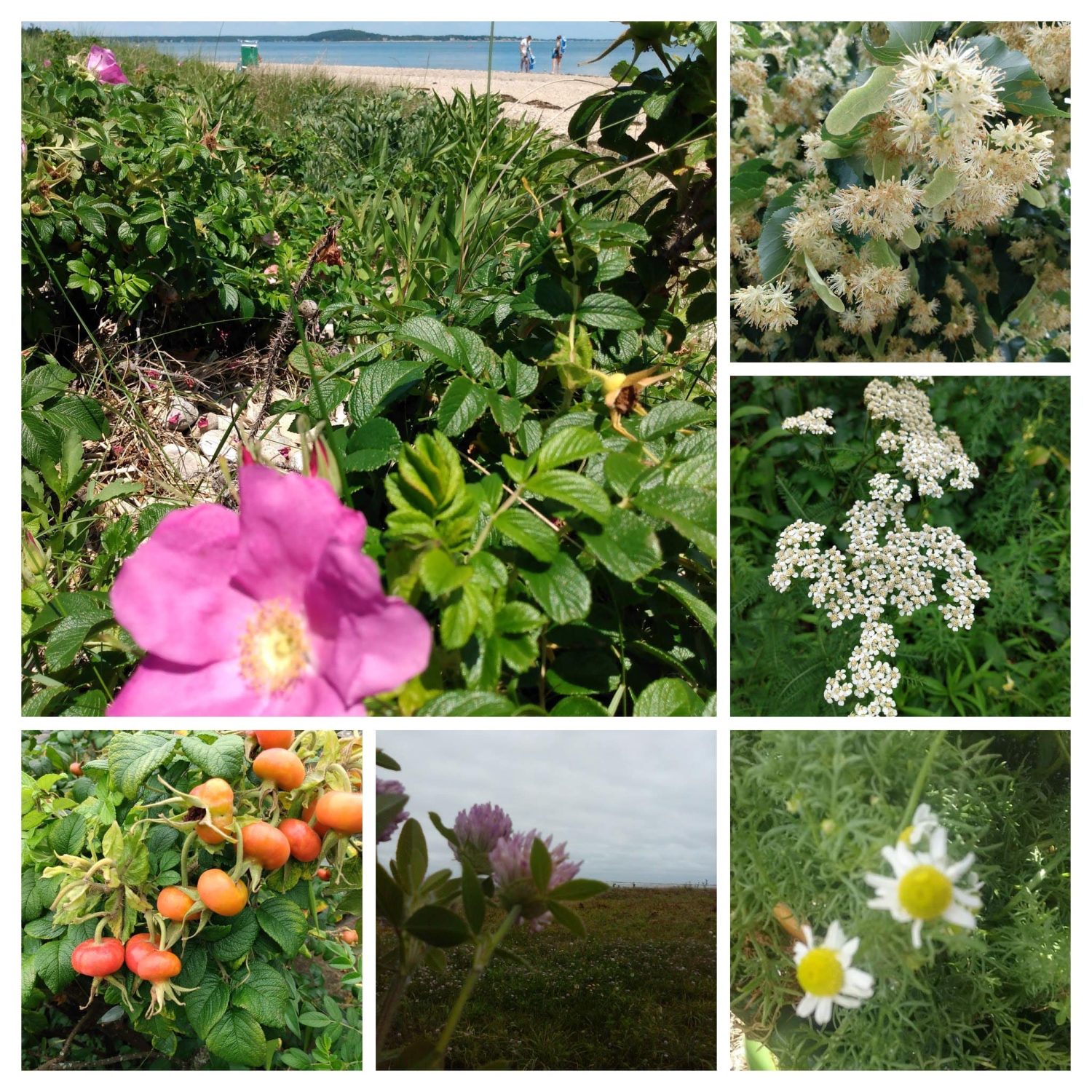
From left to right: Rose, Linden, Yarrow, Rosehips, Red Clover, Chamomile
Plants, Place, and Harvesting
.
Scientific names are important for identification but, also the tradition that Messegue learned from a young age was imbedded in centuries of practice, passed down by family, part of the geography of known and loved plants. Messegue received a deeply embedded knowledge of plants in time and place and relationship to each other and to the land itself. With the careful, deep wisdom on local plants and their uses that was tried and true. Within family, home, and community for centuries.
Maurice also describes when and how to harvest these honored, local plants that he learned while taking in knowledge from his father. Learning by listening, doing, and observing. For example: “On the evenings when he said, “There’s only a sliver of a moon tonight,” then the young Maurice would know he would be gathering herbs the next morning. His father would say: “My boy, remember, never when there’s a full moon: moonlight saps their strength.” By 10 am, Maurice describes that it was too warm to pick herbs so his father would find a place for them to sit and break out some bread, a bit of goat cheese and garlic and enjoy the simple meal together. Then around 4 pm they would resume gathering plants well into the night. He learned that the flower of one plant may be used, or the root of another but each plant had to be learned specifically. His father told him: “…the goodness of a plant isn’t always in the same place” (Messegue, p. 9). So the young Maurice learned to distinguish what parts of the plant to harvest.
Messegue’s First Client
Messegue describes: “…I was preoccupied with the fact that this was my first real patient, and was busily making mental notes: high strung, florid complexion, out of condition for lack of exercise… I noticed he had drooping eyelids…It was a start” (Messegue, p. 32). The client was in a great deal of pain from a rugby wound and Messegue was planning on making a poultice for his shoulder. He realizes when he sees the client take off his top uniform, sitting in his vest saying firmly: “Go ahead!” Maurice states: “I was temporarily taken aback at the sight of the froth of grey hairs on his chest…for although I had previously given prescriptions, I had never in my life actually treated or touched a patient or applied a poultice.” Maurice proceeded to make a poultice out of finely chopped cabbage, watercress, stinging nettle mixed with egg white as a carrier to keep the herbs in place. He then added a teaspoonful of his macerated herbs. (Soaked and macerated in once boiled then lukewarm water,) The macerated herbs were based on these herbs: “meadowsweet, common broom, Roman chamomile, clary (sage), Great Burdock, single seed hawthorn, creeping couch-grass.” He then goes on to recommend hand baths. In the Appendix, Messegue recommends a hand bath for 8 minutes in the morning and 8 minutes at night (Messegue, p. 64). I would think the hand bath would include the above maceration but, the passage is just a brief account. This is the first of herbal baths that he recommends as a very young adult to his commanding officer.
From here his reputation grew. He worked with everyday people and also famous people. He would never turn away anyone who did not have money but did eventually grow in popularity so much that he could not see everyone who came to see him. Messegue makes many statements in his autobiography about how to work with people. He called his clients patients. Or, at least, that is how it is translated. Herbalists are guided to call people clients rather than patients since we don’t officially treat anyone such as how a doctor would with a diagnosis. Of course, some herbalists are also nurses, doctors, etc.
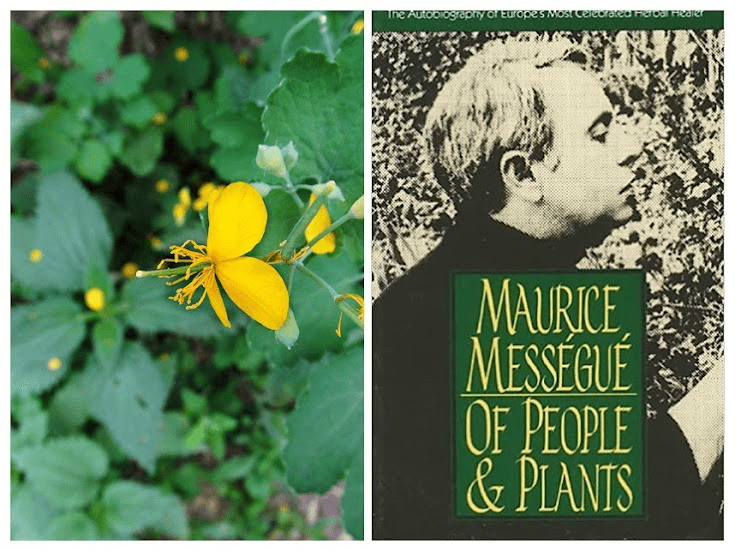
Guidelines and Observations for Practice from Messegue
- “In the space of a few minutes I had learned that you must first let the patient talk, and then show (them) that you are familiar with (their) ailment” (Messegue, p. 60).
- Messegue never turned anyone away. Not due to lack of money as ⅓ of his clientele could not pay. He spent a half hour consultation with each person and so many people had to be turned away. The waiting line was so long. He harvested all his plants in the wild. His plant resources dwindled due to the number of patients he saw. He was eager to help people and to learn from them. He learned he could not help everyone and had to turn them away or send them to a doctor (Messegue, p. 64, 65).
- Messegue only used wild plants that he collected himself (Messegue, p. 165).
- Messegue would “treat the patient before the illness.” Meaning he would look at lifestyle factors and state of mind in treating illness. He would look at the diet (Messegue, p. 100).
- Messegue’s father Camille told him: “You see mon che’ri… a man’s life and his body go together, they travel the same road. Each affects the other, so to treat the one you have to know the other” (Messegue, p. 153).
- “I cannot do without the patient’s cooperation any more than a doctor can, the patient’s faith is indispensable to his cure” (Messegue, p. 198).
- Messegue refused to treat cancer or tuberculosis (Messegue, p. 254).
Messegue’s Treatment for Gastritis
Gastritis:
Roman camomile, one dozen crushed heads
Greater celandine (leaves and stems, semi-fresh if possible), one handful
Corn poppy (flowers and crushed capsules), one handful
Round-leaved mallow (leaves and stems), one handful
Nettle (leaves, fresh if possible), one handful
Lukewarm compresses to be applied to the stomach and/or hand-baths (Messegue, Appendix, p. 312)
Quantities for a Quart of Preparation:
Boil a quart of water for 5 minutes. Let it stand. When it is lukewarm, pour it into a container, preferably enamel or plastic. Put in your mixture of crushed or chopped plants. Let the plant matter macerate/soak for four or five hours and protect from dust. (Strain out the plant matter and squeeze out all the infusion.) Then pour the infusion into a clean container, never a metal bottle. This preparation is used for foot and hand baths, hip baths, vaginal douches, penis soaks, poultices, compresses and gargles.
For Foot and Hand Baths:
Boil 2 Quarts water. Let Stand for 5 minutes. Take 8 fluid ounces (one half pint) of the plant extract formula you made, i.e. gastritis tea infusion, and add it to the 2 quarts rested boiled water. This preparation can be kept and re-warmed but without re-boiling or adding more water. This will keep for 8 days (Messegue, p.p. 293 & 294). (I think this was room temperature as he states his remedies were on shelves. He does not further specify. I would keep it in a cool location.)
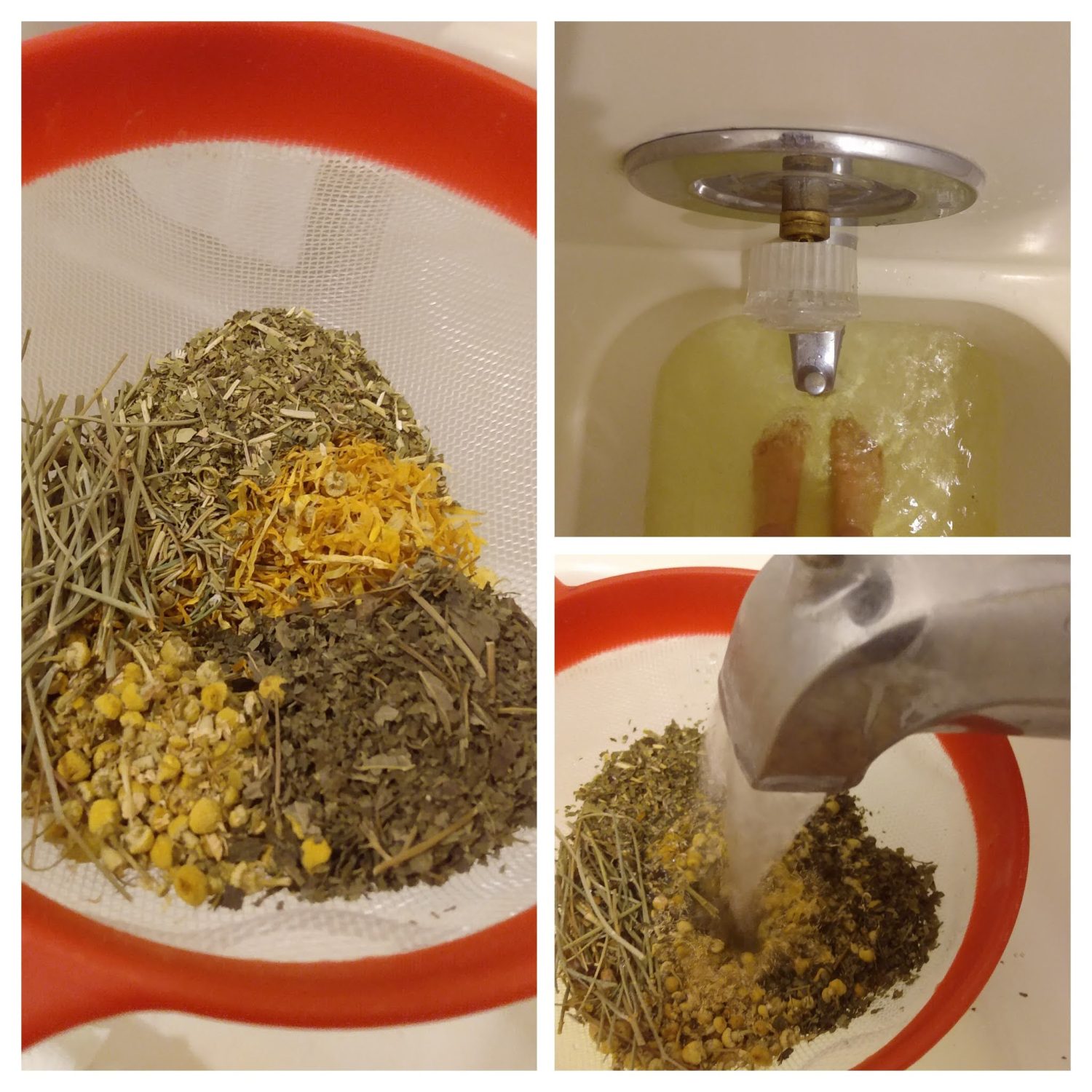
Herbal Bath Preparation
Further Reading and Suggestions
- Water Based Therapies of Bhutan, on the traditional and preferred methods of herbal bathing in Bhutan. Studies indicated that herbal bathing was effective for 16 different ailments.
- An excellent short article by by mkwellness.com talks about the role of herbal foot baths in Chinese Medicine: “Herbs, salts, and oils enter the bloodstream through the skin and affect our systems with their terpenes, alkaloids, volatile oils” and other phytoconstituents.
- Benefits of Chinese Herbal Footbaths
- David Hoffman, in his classic The New Holistic Herbal describes the preparation and uses of herbal baths.
- Herbs: Dandelion and ginger are indicated for flu relief. Mugwort is used for pain relief, promotes circulation, and can bring on the menses. Chrysanthemum can relieve sadness, anger, is antibacterial, and relieves stress.
- Long term benefits of foot baths include reducing fatigue, lowering blood pressure, calming the mind and improving sleep, strengthening muscles and bones and increasing circulation.
- Contraindications for footbaths: Pregnancy, metastatic cancer, active infection, a disease made worse with increased circulation, an open wound or recent surgery.
- The best and most pleasant way of absorbing herbal compounds through the skin is by bathing in a full body bath with half a litre (a pint) of infusion or decoction added to water. Alternatively, you can also take a foot or hand bath, in which case you would use the preparations in undiluted form.
- Any herb that can be taken internally can also be used in a bath.
- For an effective bath that is relaxing and exquisitely scented: lavender, lemon balm, rosemary leaves or elder flowers work very well. For a bath that will bring about restful and healing sleep an infusion of linden flowers, Valerian and hops would work well. (I might add lavender to help with the odor of valerian.) For children with sleep problems or when babies are teething, try either chamomile or lime blossom (linden flowers,) as the herbs mentioned above may be too strong.
- For fevers or to help the circulation, then stimulating and diaphoretic herbs can be used like cayenne, boneset, ginger or yarrow. (I would use caution in whole body soaks with cayenne or use minute quantities. Sensitive body parts at stake here. Also, consider cayenne as part of a formula for foot or hand soaks or in compresses, liniments, salves, etc.) (David Hoffman, p. 159).
More on Bathing from Beloved Herbalist Rosemary Gladstar
When I think of Herbal baths, I now think of Maurice Messegue but, more readily and often I think of Rosemary Gladstar. Every book I have of hers talks about the benefits of herbal baths. She says, “Depending on the herbs you choose and the temperature of the water, you can create a relaxing bath or a stimulating one, a bath that is soothing or decongesting, or uplifting. Baths open up the pores of the skin, our largest organ of elimination and assimilation. Bathing is nothing less than immersing ourselves in a strong infusion of healing herbal tea.” She says that at the most basic level you need a tub, a clawfoot tub would be ideal, and herbs. She gives easy instructions that I have tried myself. “Place the herbs in a large handkerchief, clean nylon stocking, or strainer and tie it directly to the faucet of the tub. Turn on the water at the hottest temperature and let the water flow through the herb bag vigorously until the tub is about half full. Adjust the water temperature to a suitable degree: warm to hot is relaxing, cold is stimulating, and tepid is neutral. Finish filling the tub, then add any essential oils” (optional to use essential oils). To Rosemary’s credit she recommends lighting incense, candles, to take the time and energy for an herbal bath… why not “do it up!” (Rosemary Gladstar, Medicinal Herbs., p. 44).
Rosemary Gladstar also recommends foot or hand baths. Here is an energizing foot bath that she recommends for headaches and/or stress. Gladstar explains: “For many people, stress focuses in their head. It gets stuck, so to speak, in the mental plane. This is perhaps why stress so often results in headaches and mental disorders. Though hot herbal foot baths feel great anytime, they are especially recommended for headaches and mental stress. They are deeply relaxing and easy to do and are an excellent way to relieve head tension and stress” (Rosemary Gladstar, Herbs for Stress & Anxiety., p. 61).
Rosemary’s Herbal Foot Bath Recipe and Method:
2 parts lavender
1 part hops
1 part garden sage
½ part rosemary
a few drops lavender essential oil (optional)
1. Place the herbs in a large pot and fill with water. Place a lid on tightly and bring to a low simmer. Simmer over low heat for 5-10 minutes. Pour into a large basin. Add the lavender essential oil, if using, and adjust the temperature with cold water. It should be hot enough to be almost uncomfortable but without burning the feet.
2. Make yourself comfortable in the softest, coziest chair you have. Slowly immerse your feet in the hot water. Cover the basin with a thick towel to keep the heat in. Refill the basin with hot herbal tea as it cools. She recommends to play quiet soothing music or just enjoy the silence. Sip on chamomile or feverfew & lavender tea and have a friend massage your head and shoulders if you can.
(Rosemary Gladstar, Herbs for Stress and Anxiety, p. 61,62).
Here is a calming soothing bath I made using some comforting, relaxing nervine and soothing herbs such as: chamomile, calendula, pine, passionflower and oatstraw. I used a simple strainer. It did add a small amount of herb to the bath itself but it was an easy way to take an herbal bath and sooo relaxing. It infused really well by the heat and pressure of the water.

Southwest Bath Herb for Pain (see below): Snakeweed, Escoba de la Vibora, Gutierrezia sp., photo by Dara Saville
More on Bathing from Thomas Easley and Steven Horne
- For Itching: (Hives, Chicken Pox, etc. Yellow dock, Oregon grape, burdock, barberry, comfrey, chickweed, clay, lavender, vinegar (hot bath only)
- For Swelling and Inflammation: Comfrey, plantain, calendula, white oak bark, witch hazel, chamomile
- Cleansing Skin Pores: Chamomile, Ginger, vinegar (hot bath only)
- Relaxing Nerves: Kava kava (seriously, try this as a whole-body soak,) lavender, chamomile, rose, catnip, epsom salts.
On Water Temperature:
“Hot water has a relaxing, opening effect, whereas cold water causes constriction and a reduction in blood flow. Alternating hot and cold hydrotherapy stimulates blood circulation, lymphatic drainage, and nerve energy. It can ease spasmodic pain and cramping, improve circulation, enhance muscle tone, and improve mood.” They recommend alternating hot and cold showers. Start with a comfortable hot shower for 3 minutes then follow with an abrupt change to a cold water shower for 2 minutes. Repeat this cycle 3 times and end with the cold shower. After the shower they recommend you have a full or partial massage or a brisk towel rub.
They indicate this can be done for individual body parts such as a foot (or hand.) Any body part that can be immersed. This alternating hot and cold water therapy has proved helpful for gangrene or other illnesses involving poor circulation to the extremities. Alternate the hot and cold soaks in the same manner as the hot and cold showers. To further enhance the effect, stimulating herbs (like capsicum, garlic, and ginger) may be added to the hot soak, and soothing herbs (like comfrey or plantain) to the cold soak.
From The Modern Herbal Dispensatory by Easley and Horne
Sitz baths are a common use of herbal baths. It can be useful for those who cannot shower. It brings healing relief to the pelvic area. Sit in a basin or shallow filled tub to cover your bottom. Add a decoction of herbs or add herbs as described by Rosemary Gladstar above. Alternating with a stand up cool shower (if possible) after the warm bath is a method of alternating hot and cold temperatures to increase circulation and healing (Easley & Horne, p. 336, 340, 341). Yerba Mansa leaf is a traditional sitz bath ingredient as part of a formula to heal the tissues after childbirth.
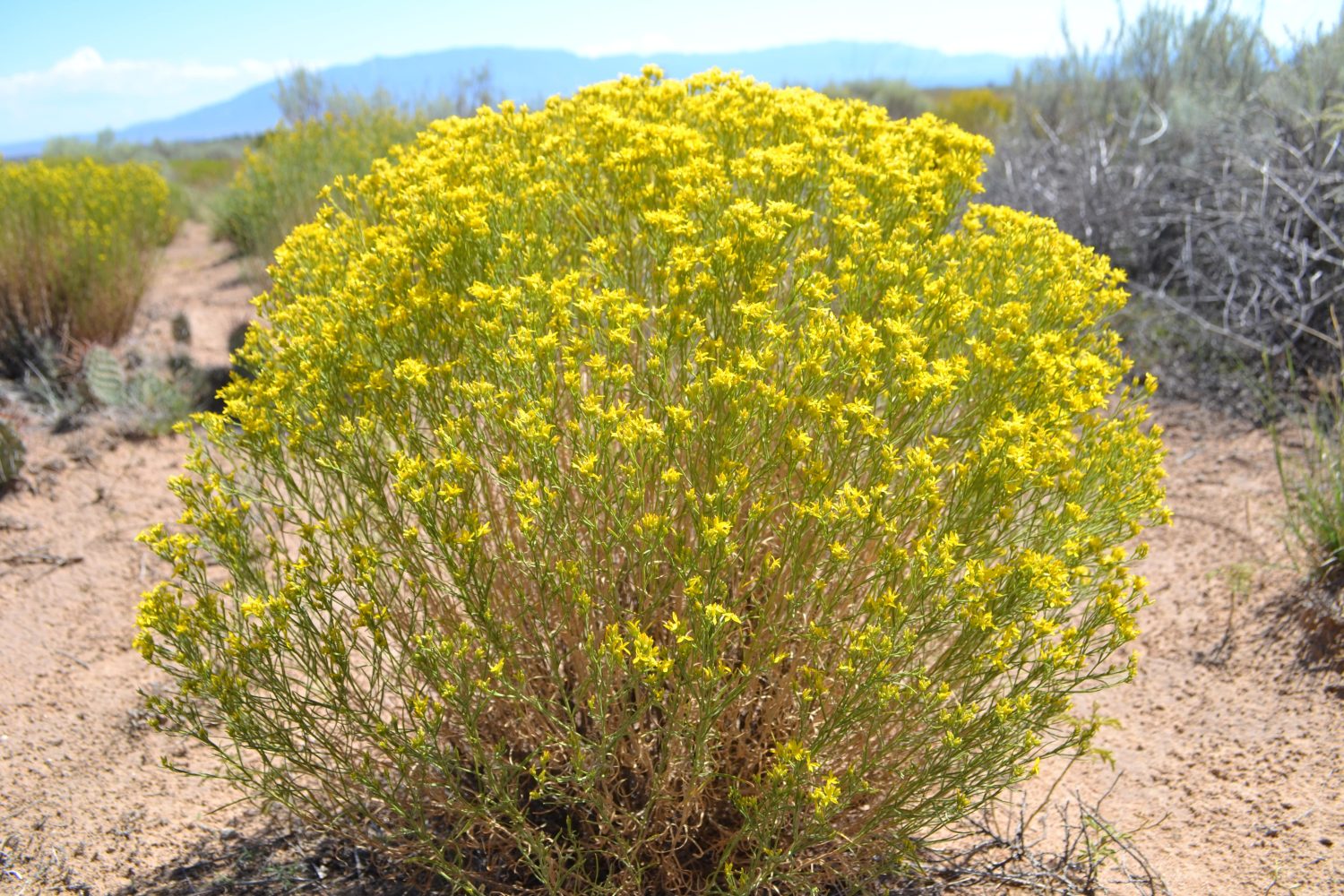
Gutierrezia sarthrae, Snakeweed, Escoba de la Vibora , photo by Dara Saville
Southwest Herbal Bathing with Snakeweed from Michael Moore
A remedio well known as a bath herb in the desert Southwest is called escoba de la vibora or snakeweed, sometimes called snakebroom as it was made into a broom even for a healing limpia (cleansing). This yellow flowered plant grows as a small shrub. It can get quite bushy and shrub-like with thicker stems as it grows throughout the season. It is the product of over grazing and has dominated the landscape in these areas. It is a native plant and is a wonderful pollinator nonetheless. It is a very important traditional healing plant that spans centuries of use.
According to Michael Moore, its habitat abounds. “High and dry slopes, mesas, bajadas, river bottoms…. you name it there is probably some Escoba there. It is found from 1500’ – 9,000’. It is above the chaparral/ Larrea ecozone, mingled with and above the mesquites, into and above the pinon/juniper belt, into the sagebrush.
Clip the stems into bundles and dry that way. Use a tied bundle and steep in a quart of boiled water for one half hour. Then remove the bundle. Let the tea cool and then add it to a hot bath.
Medicinal uses: The hot bath is an efficient and pleasant treatment for arthritis and rheumatism, sore muscles, and hypertensions. Like other palliative treatments, it won’t cure anything, but it is effective in reducing inflammation and pain. The bath can be repeated as often as desired. Be warned, however, if you have arthritis, it works so well that you may need to gather dozens and dozens of little bundles to last for the fall and winter months. Not that it isn’t abundant; it’s so abundant that you may not take it seriously. A respected, almost revered remedio among New Mexicans and Arizona folks, where a tea of the herb is usually drunk while bathing in it. The infused tea can also help the nausea from hangovers or a simple stomachache and will slow heavy menses. Although by no means a heroic medicine, it is common, safe, and may sometimes work so well for joint inflammations as to supplant salicylate (aspirin) treatment or be used alternately with other pharmaceutical drugs to decrease their side effects” (Michael Moore, p.p. 55, 56). Michael Moore really tells a good plant story, enough to make you smile and understand the uses of an almost ubiquitous plant with a great history of use as a highly effective herbal bath remedy.
…..
Thank you for taking this plant journey with me. I recommend reading Maurice Messegue’s autobiography Of People and Plants. His descriptions of learning a lineage of plant healing from his father is very inspiring. Based less on statistics and chemical studies of plants and more on real life evidence of how plants work in concert with diet, lifestyle and the health of the mind; of how herbs helped families for generations when that was the remedy available and because of this necessity for why they work so well.
Herbal bathing seems so simple. So ubiquitous, almost like snakeweed that could be overlooked for its simplicity and common place. Bathing is something we remember from childhood. Especially baths, whereas many people shower for time and convenience. Nevermind that water has been scarce throughout time and different cultures needed to bathe with sand to remove dirt or with oil to remove impurities. Making herbal teas and adding them to water heals the body through osmosis as Messegue says. The heat of the water brings blood flow closer to the surface and plant compounds can then be absorbed through the skin. The herbal teas for baths have already been prepared so the constituents and healing properties are readily available to be absorbed. Mankind has used these healing techniques for centuries as have mothers and fathers healing their families have done for too many centuries to count.
References
Photo Credit: Maurice Messegue by Alchetron.com
Maurice Messegue. Of People and Plants. By Maurice Messegue. Healing Arts Press., Vermont, 1991.
The Region of Gers, France: https://en.m.wikipedia.org/wiki/Gers
Benefits of Copper for a water vessel: https://www.scmp.com/lifestyle/health-wellness/article/3185935/why-you-should-drink-water-stored-copper-jug-or-pot
Water Based Therapies of Bhutan. https://www.mdpi.com/2073-4441/13/1/9
Traditional Chinese Medicine: Footbaths https://www.mkewellness.com/blog/2022/3/23/benefits-of-chinese-foot-baths
The New Holistic Herbal. by David Hoffman. Element Press, 1983, 1990.
Medicinal Herbs. by Rosemary Gladstar. Storey Publishing, 2012.
Herbs for Stress and Anxiety. by Rosemary Gladstar. Storey Publishing, 2014.
The Modern Herbal Dispensatory. by Thomas Easley and Steven Horne. North Atlantic Books, 2016.
Medicinal Plants of the Desert and Canyon West. by Michael Moore. Museum of New Mexico Press, 1989.

